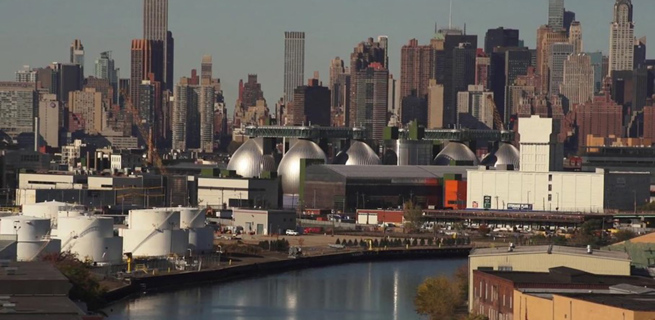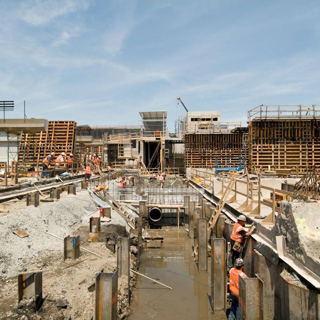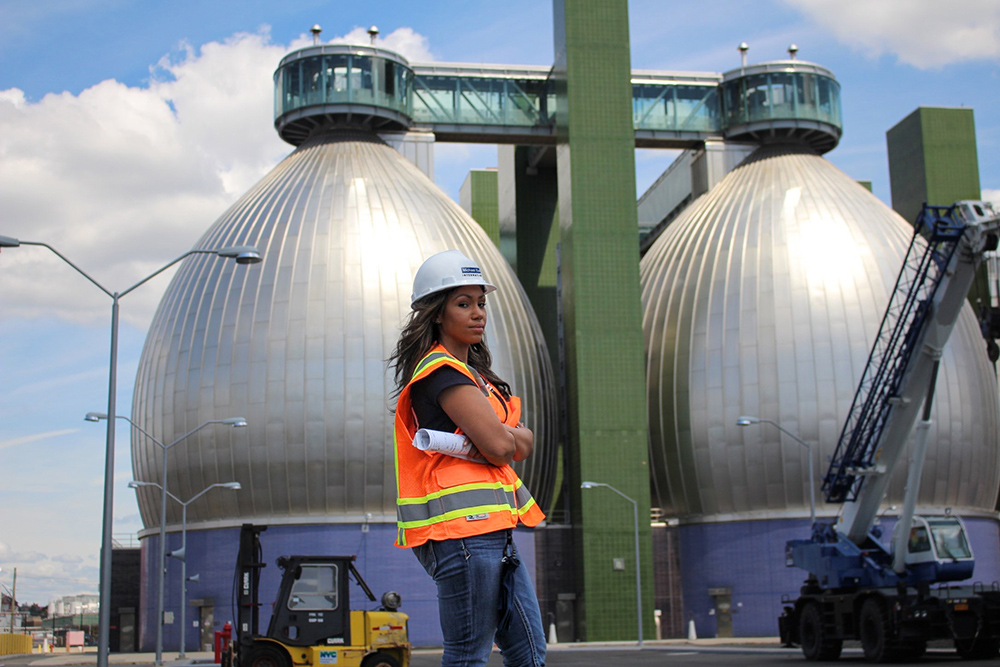Newtown Creek Wastewater Treatment Plant
Brooklyn, New York
The Newtown Creek Wastewater treatment complex, the largest of 14 wastewater treatment plants owned and operated by the New York City Department of Environmental Protection (NYCDEP), processes wastewater from sections of Brooklyn, Queens and Manhattan from its location along Newtown Creek and Whale Creek.
The underlying challenge: The plant had been plagued by a phenomenon common to wastewater facilities that combine the management of sanitary wastewater and stormwater – intake of excessive rainwater and stream overflow that often exceeded the plant’s handling capacity. During “wet weather” events, some of that untreated wastewater would make its way into the creeks and then flow from Whale Creek to the East River, polluting this waterway and damaging the ecosystem.
To comply with Clean Water Act requirements, NYCDEP developed a three-phase, $5 billion expansion-and-upgrade plan. The third and final phase, which would prove the most ambitious, included four distinct projects: construction of a Central Residuals Building to remove all non-biological matter from wastewater; upgrading of the South Battery and Control Building, which provides grit removal, aerobic processing and biological setting; construction of a new sludge loading dock, including maintenance dredging of a Superfund site; demolition of the old East River Sludge Storage Tank and decommissioning of the East River loading dock.
NYCDEP contracted with a joint venture that included Michael Baker, Gannett Fleming and APTIM to provide construction management services for this complex $1.2 billion expansion phase. The team handled project management, constructability reviews, resident engineering inspection, schedule management, delay analysis, contractor and stakeholder partnering and community outreach.
To mitigate the risk of falling behind schedule, the team deployed an innovative technique at the time, now widely known as 4D building information modeling (4D BIM). The 4D model allowed us to perform “clash detection” and “what if” analyses to determine ways of improving construction completion dates; allowed contractors to view work sequences, logistic constraints and interferences with other contractors; and illustrated the impacts of out-of-sequence work or potential scope changes. It also allowed the NYCDEP to identify potential program implementation conflicts early in construction; allowed plant staff to visualize complex start-up sequencing; and presented construction planning and sequencing to project stakeholders, including outside agencies.
This unique approach enabled the CM team to discover issues with sufficient time to take corrective action. Due to 4D modeling, the JV successfully delivered this complex project with only a 1.2 percent change order rate. The effectiveness of the 4D model approach was so successful, the NYCDEP has made 4D BIM a required service for future large-scale projects.
Ultimately, the final phase increased the plant’s daily wet-weather-processing capability from 310 million gallons to 720 million gallons, a 132 percent increase in capacity that means a significant reduction in untreated water escaping the treatment facility during heavy rains. The major urban wastewater processing facility has been transformed into an award-winning model of modern infrastructure that also provides a waterfront nature walk and serves as an educational tourist attraction – completed under budget by $71.7 million.
Innovation
“It’s become an industry standard now, but at the time, not many had 4D BIM capabilities. It allowed us to proactively manage the problem of having 12 prime contractors on site at the same time with upwards of 10 cranes on site – and be 10 steps ahead. The cutting-edge technology enabled us to deliver the project ahead of consent decree, with a change order rate of only 1.2 percent. Well below the typical 10 percent range seen on projects this size. It was one of the many management techniques used by the team to deliver this six-time award winning project.”
Iris G.
Project Manager



